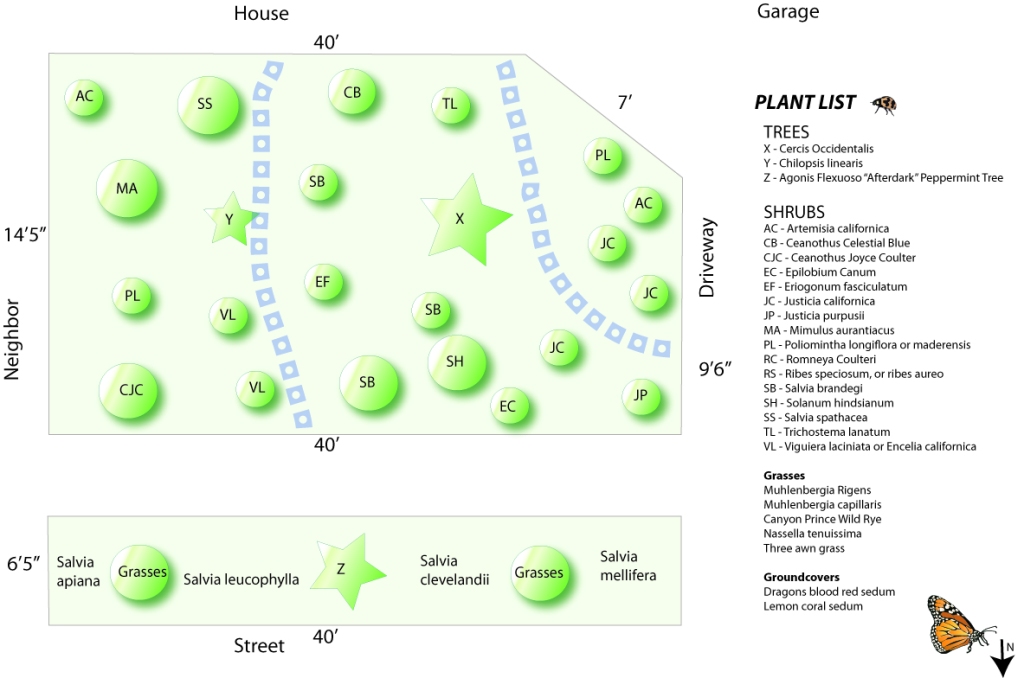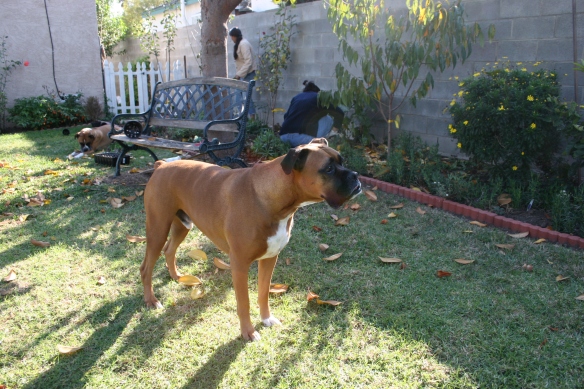We moved to Long Beach from the lovely city of Encino (San Fernando Valley) in March 2010. We bought our not-so-charming-at-first-look, fixer-upper ranch style, built-in-1950’s-tract house to be closer to our families. Sitting for two hours on the 405 traffic to pop over from Encino to Long Beach for dinner with family and friends was getting to be exhausting. We still miss Encino – the awesome Sepulveda Dam Basin Recreation Center (with its Lake Balboa and recently restored Bull Creek), weekly sojourns at our favorite Taiwanese food (Mandarin deli), our favorite Salsa and Beer… Long Beach – where are your good restaurants, ye of corporate chain food joints?
But, Long Beach has a wonderful upside of being gritty and lovely at the same time. We love driving around for errands and coming upon old Arts and Crafts homes and bungalows. I was pleased to find out that this is another area where India has had a direct influence on architecture. Bungalows are from the Bengali word bangla, a dwelling for the bourgeois Indians, the style of which was copied extensively for the Arts and Crafts style bungalows here in the United States.
Me and my husband covet the Arts and Crafts style for our unassuming ranch style house, which was placed like most homes in California en masse and very cheaply post WWII. Coming from India, where the houses are made of solid brick and have 20′ ceilings, we were initially perplexed by the tiny rooms, lack of electrical outlets, ceilings which we could reach up and touch and slip-shod aluminium frame windows, which leaked in outside elements. In fact, I had come to America ten years ago to study architecture, but soon changed my mind. What can the Americans possibly teach me about architecture, I thought? I chose to study finance instead – a game that Americans excel at (but perhaps not so much even that – looking at the past few years Wall Street debacle).
I slaved 60-plus hours a week at a Beverly Hills Hedge Fund for four years, but hated it so much that I decided to change my career path entirely (thanks to my ex-boss who unintentionally made me quit a field entirely usuitable to me). American universities are amazing and wonderful – they have so much knowledge to offer and the libraries and the professors are brilliant. After poring through catalogues, talking to friends and family – I decided to apply to the renowned Cal Poly Pomona’s Master in Landscape Architecture program. That was one of the best decisions of my life.
The MLA program is rated in the top 10 in the US, teaches about design, environmental ethics, sustainability, cultural awareness, california natives, water sustainability, watershed awareness, wetlands and creek restorations etc. – I got so much out of it, plus it changed the way I perceive the external world. It taught me to perceive the world in multiple layers, rather than think in a uni-dimensional way.
One of my favorites class was the California natives class. 70% of the native plants in California are endemic to it – that is, they are not found anywhere else in the world. Coastal California is mediterranean in nature, its plants are uniquely adapted to the soil and climate.
Mediterranean climate is generally described as having a hot, dry summer and a mild, wet winter. Although California has a vast array of unique habitats, within a few hours you can drive from the coast – to the desert – to the sierras and to the redwoods, it is still described as being Mediterranean. Other Mediterranean climate countries are Spain, Italy, Greece, South Africa, Southwest Australia and Central Chile. They cover 5% of the land mass of the earth, but have 20% of the plant species in it. Mediterranean plants are aromatic and xeric.
City of Long Beach has a wonderful program called “Lawn to Garden” program. Their website describes it: “The Long Beach Water Department will rebate $2.50 per square foot of lawn removed from front yards and parkways and replaced with California friendly landscaping, up to 1,000 square feet to qualified customers.”
My husband and I discussed the option of taking out our turf entirely. We finally agreed that although it was a lot of work, we really wanted a native garden, instead of boring grass, which was guzzling precious water and producing nothing in return.
Our gardener, a grumpy man, comes in weekly with a loud lawn-mower (I can’t stand them) and then an equally loud leaf blower to keep the grass trimmed, while we pour gallons of water on it to make it grow. The weekly see-saw between growing and cutting, growing and cutting – the crazy dance had to be stopped. We wanted the leisure of growing a tiny patch of a productive, aromatic habitat – that we could sit in and enjoy. The lawn was of no use to either of us (we couldn’t roll around on it) or the butterflies, bees and birds. It had to go. Sorry, Mr. Gardener. We are going to offer him to stay on for the back-yard. We still have lawn there (but are taking part of it out to install a herb garden). Last week, we had the front-yard turf removed. See attached picture of the turf all gone. The two straggly plants are the ‘trees’ we had planted the year before – Western redbud (Cercis occidentalis) and Chilopsis linearis.

We may deviate only slightly from the approved plan (there are some last minute plants I want to add – it’s easy to be greedy with so many lovely choices). I will post the final plan later, changes et al, when everything has been installed. We are keeping the sprinkler in the parkway, but are installing drip irrigation for the main front natives garden. Wish us luck!



